Explore the Fluid Foundations of Movement
Find your deepest supports — comfort, nurturance, and strength — for yoga, dance, and all that you do!
How do we build the inner support we move with for a lifetime? The answer may begin earlier than we think. What we learn in infancy — and what we may have missed — lives in our bodies, waiting to be reawakened.
In this post, we explore the deep intelligence of belly play, fluid integration, and how movement patterns from infancy can be rediscovered — or found for the first time — in adulthood. What we find are the underpinnings of comfort and grace in movement.
Be sure to enjoy the experiential video embedded in this post below. Viewable to everyone!
Movement Integration is Established Very Early
As babies, we’re just beginning to lay down patterns of movement and support that will last a lifetime. We are all born with our own specific traits and qualities. The ways in which we are nurtured, held, and moved by our caretakers helps shape our internal organization. Even how we’re placed to play can have profound effects on our physical and emotional development. These early experiences build the body’s inner intelligence and its growing sense of how to support itself from within.
Encouraging babies to spend time on their bellies gives them the opportunity to experience the emergence of critical inner templates of support. They learn to feel the support of earth, yield to it, and begin to move away from it. These are physical developmental patterns and they correspond with brain growth and the simultaneous expanding of our perceptual field. As our babies play and explore, deep layers of support begin to organize themselves — layering one on top of the other, each preparing the ground for the next developmental step.
Importantly, these are not just musculoskeletal patterns. They are whole-body templates of organization. They set the stage for how we move, feel, and relate — not only in childhood, but throughout life.
Developmental Benefits of Belly Play
Much more than just physical exercise, belly play supports deep, layered development across every system of the body. Sometimes we refer to building front body tone when speaking of placing our babies on their bellies to play. That is often misunderstood to simply be muscular tone. The definition of tone is readiness to respond. It’s important to understand that tone is a resilient place of readiness. Toned tissue is just as ready to rest as it is to engage in strong action. When we refer to tone here we are speaking more inclusively. Not simply muscle, but everything — resilience and ability of all our body tissues to respond appropriately to any situation.
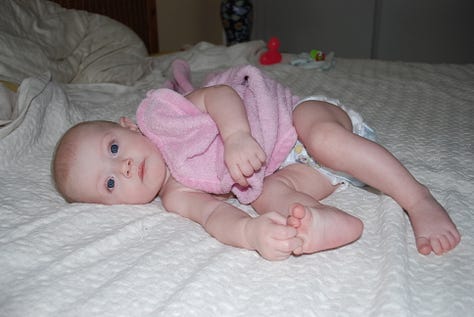

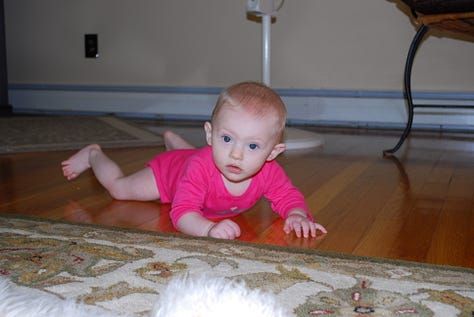
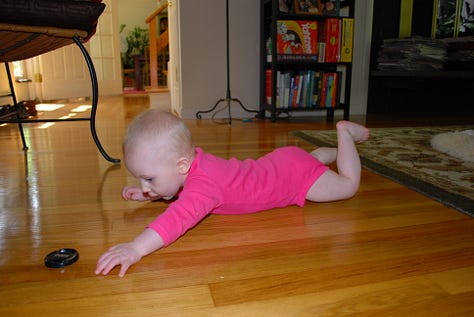
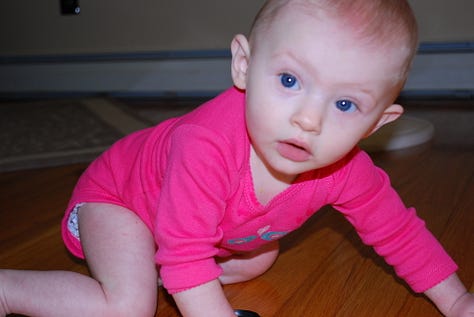
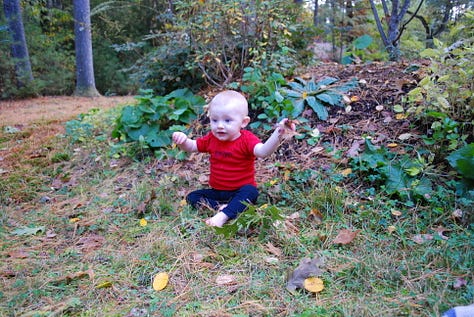
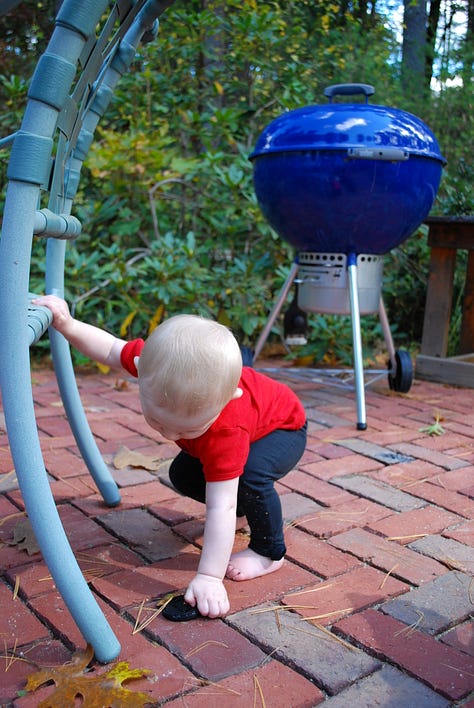
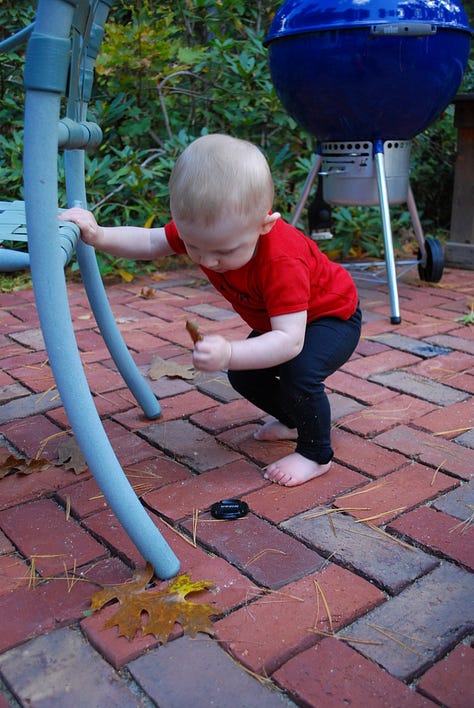
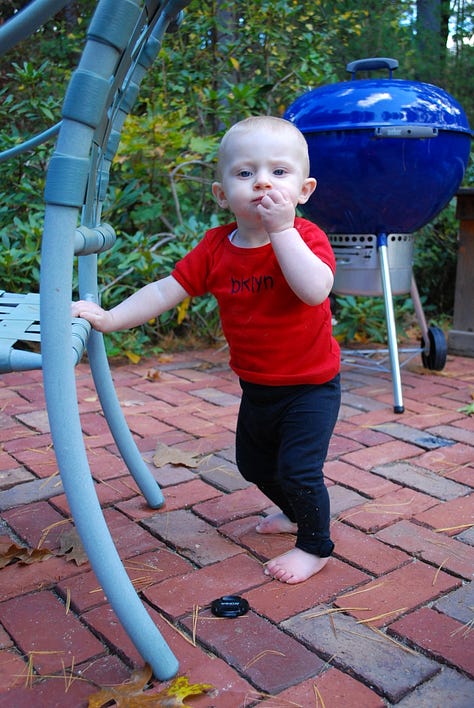
As babies spend time on the earth — especially on their their bellies — they begin to tone their organs. They learn how to yield into the earth and how to rise up from it. These actions lay the groundwork for structural support and resilience for a lifetime.
Their spines begin to form their more grown up curves. Their nervous systems start integrating sensation and emotion — not just in isolated parts, but throughout the whole body. Their fluids — both cellular and fascial — begin to organize into coherent pathways of support and communication.
These movements aren't isolated from one another. As they grow and develop so does everything else. They are the beginnings of a coordinated, unified experience of self — body, mind, and feeling all coming into relationship.
It is Never Too Late to Make These Fundamental Connections
Not all of us had the opportunity to develop these beautiful templates of support as babies. Maybe we didn’t get much belly time. Maybe we were rushed through stages or propped into positions too early, when it would have been more optimal to find our own way to stable sitting and standing. Maybe we didn’t crawl, but went straight to walking.
That’s okay. The intelligence is still there, and it’s accessible to you now. We can still find the power of this integration.
It is never too late! There is still time to get down on the ground and play. These patterns of support are still in us — waiting to be discovered — felt, reawakened, or even awakened for the first time.
Yoga gives us a way in. It invites us to rekindle these deep waves of support through breath, movement, and attention. As adults, we can return to the ground, lie on our bellies, and explore. We move, we breathe, we feel. We follow what arises. We can take joy in our growth and accomplishments even as we struggle to find support that we need. Frustration? Sure. Accomplishment and joy, too. And meanwhile, our bodies are learning valuable lessons.
Often, something surprising happens: as we slow down and pay attention, our bodies begin to respond. There’s a sense of integration that emerges — not as something we push or force, but as something already present, ready to be engaged. A kind of ease we didn’t know was possible begins to take shape.
Want to Explore This in Your Own Body Now?
Let me guide you. These ancient pathways of support are still there, waiting to respond. Do this with me. (15 min. video)
Neurocellular Integration: The Fluid Body as Equal Partner
In Body-Mind Centering®, and in Embodyoga, we call this developmental process neurocellular integration. It refers to how the nervous system grows, yes — but it also points to something more inclusive. The nervous system doesn’t integrate itself alone. It is in constant communication with the cellular and fluid environment in which it lives.
We propose that the fluid body is just as intelligent as the nervous system. But unlike the nervous system — which has been extensively studied and mapped — the intelligence of our fluid body remains largely unrecognized in Western science. Its influence is profound, even if it's often overlooked. (Hmmm…patriarchy / matriarchy?)
Experientially, we can describe our fascial system as a primary organ of the fluid body. Fascia — the sensory web that weaves throughout the body — finds its developmental roots in the embryological sea of mesenchyme. This undifferentiated tissue gives rise to all our connective tissues, including fascia, and forms the pathways through which everything else grows. Our nerves don’t arise separately — they grow into the mesenchyme. They are shaped and supported by it.
The fluid body, derived from the embryological germ layer that forms connective tissues, provides the medium for this development. It is not merely structural; it is intelligent. It is the context that allows the nervous system to arise.
Two Systems or One Unified System?
Prana — the directional movement of life force — flows through our fluids. Water is its medium. The nerves don’t initiate movement; they follow the prana in the fluids. Without this fluid intelligence, the nervous system has no foundation for growth or function.
So it’s not that separating the nervous system from the fascial and fluid body is wrong — it’s just incomplete. It leaves out the relational field that makes development possible.
Might our fluids and nerves be one system? Something like the way we now know that the glial cells are as important to the brain as the nerve cells?
Thank you so much for reading! Let me know your thoughts
Please help support my work by tapping the little ❤️️ icon and by sharing this post with a friend!
With gratitude and love,
Patty






Wow I’m so grateful for this information! As a breast feeding postpartum mama and relational trauma healer, personally and with others, it resonated on SO many levels. Some beyond word or concept, deeply felt, and some mind blowing insight. Thank you. I’ll be working with all this for a while!